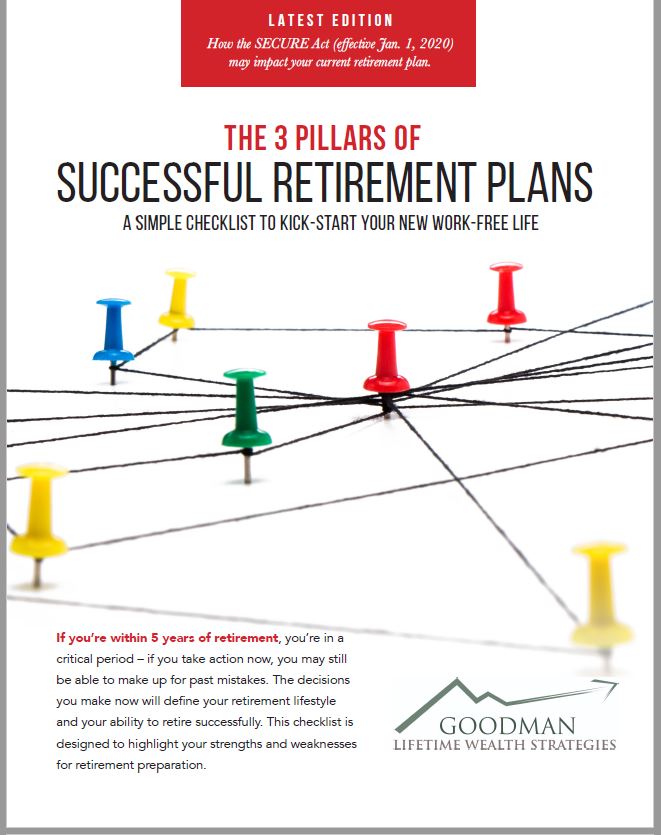In this month’s recap: Reports of a new COVID-19 variant blindsided markets as a wave of late selling erased the month’s earlier gains.
U.S. Markets
Reports of a new COVID-19 variant in late November roiled markets as a wave of selling erased the month’s earlier gains.
The Dow Jones Industrial Average took the hardest hit, dropping 3.73 percent. The Standard & Poor’s 500 Index fell 0.83 percent while the Nasdaq Composite managed a small gain of 0.25 percent.1
Thanksgiving Surprise / Volatile Trading
The markets were blindsided by news over Thanksgiving Day of the emergence of a new strain of COVID-19, which led to travel bans by multiple countries and renewed unease about the prospect of a return to economic and social restrictions.
The potential global spread of this new COVID-19 variant Omicron triggered fears of another round of economic deceleration, sending investors back to their pandemic playbook of selling travel and leisure, financials, energy, and cyclicals and buying pharmaceutical companies and stay-at-home stocks.
The sharp drop on Friday, November 26, was exacerbated by reduced liquidity in the markets due to many traders being absent on this normally quiet post-holiday, shortened trading session. Stocks rebounded as traders returned to work on the following Monday but were unable to hold their gains on the month’s final trading day.
Upbeat Company Reports / Omicron Uncertainty
The month had started off on a strong note, helped by a string of positive corporate earnings surprises, optimistic forward guidance from companies, and solid economic data. Investors were particularly encouraged by the fact that businesses had navigated the challenges of a surge in Delta variant infections in the third quarter, rising inflation, and supply chain bottlenecks.
The consensus narrative of healthy economic expansion in 2022 was left a bit dented by the introduction of the Omicron variant. Many questions surround the new variant and its impact on global economies. Markets don’t always respond efficiently within an information void, creating the potential for further volatility until more is known about Omicron.
Sector Scorecard
Industry sector performance was mixed in November. Gains were posted in Consumer Discretionary (+3.03 percent), Consumer Staples (+1.25 percent), Materials (+1.97 percent), Real Estate (+1.21 percent), Technology (+5.33 percent), and Utilities (+1.26 percent). Losses were experienced in Communications Services (-3.06 percent), Energy (-2.73 percent), Financials (-3.40 percent), Health Care (-1.11 percent), and Industrials (-1.05 percent).2
What Investors May Be Talking About in December
In the coming weeks, markets will be sorting out news from Washington, updates on COVID variant Omicron, and economic reports.
On the economic front, investors are expected to keep a close eye on retail sales for the month of November, which are scheduled for release December 15. The November report will include the post-Thanksgiving start to the holiday shopping season and potentially be an advanced read on whether the supply chain bottlenecks might hamper holiday sales.3
Another anticipated report will be the Consumer Price Index, which will give an update on inflation trends. It’s due on December 10. If inflation continues to run hot, it may test investor confidence.4
World Markets and Indicators
A resurgence of Delta variant infections, spreading economic and social restrictions, and the emergence of a new COVID-19 variant sent international stocks broadly lower, with the MSCI-EAFE Index falling 3.79 percent in November.5
Major European markets dropped, with losses in Germany (-3.75 percent), the U.K. (-2.46 percent), and France (-1.60 percent).6
Pacific Rim markets also were under pressure. Hong Kong lost 7.49 percent, Japan tumbled 3.71 percent, and Australia slipped 0.92 percent.7
Gross Domestic Product: Economic growth in the third quarter was revised slightly higher, to 2.1 percent from 2.0 percent.8
Employment: Job growth rebounded as employers added 531,000 jobs in October. The unemployment rate fell to 4.6 percent, though the labor participation rate stayed stubbornly low at 61.6 percent.9
Retail Sales: Retail sales rose 1.7 percent, exceeding expectations. This gain was, in part, attributed to higher costs and the pulling forward of holiday shopping as consumers worried about low inventory during the holiday season.10
Industrial Production: Industrial output rose 1.6 percent in October, reversing September’s slide. About half of the monthly gain was attributed to the recovery from Hurricane Ida.11
Housing: Housing starts slipped 0.7 percent in October, a surprise downturn for market watchers who had expected an increase.12
Existing home sales rose 0.8 percent, though it was off 5.8 percent from October 2020, which represents a cyclical high.13
New home sales increased 0.4 percent, though they were lower by 23.0 percent from a year earlier. The median price jumped nearly 18.0 percent year-over-year to $407,700.14
Consumer Price Index: The prices of consumer goods and services increased 0.9 percent in October and jumped by 6.2 percent year-over-year. This represented the fifth straight month of over 5 percent annualized inflation and the sharpest year-over-year increase since 1990.15
Durable Goods Orders: Orders for long-lasting goods fell 0.5 percent, the second straight month of declines. However, excluding transportation, durable goods orders increased by 0.5 percent.16
Fed Headlines / The Fed
Developments in Federal Reserve policy dominated much investor attention throughout the course of November. The first of these was the Fed announcement that it would begin its bond tapering program. Markets were unfazed by this news as they had long anticipated that the Fed would soon commence paring back its monthly bond purchases.
The second was the uncertainty surrounding whether Jerome Powell would be renominated to serve another four years as Fed chair. When President Biden finally announced his decision to renominate Powell, bond yields rose as investors became more certain that the Fed’s monetary normalization policy would proceed as planned.
Minutes from the November Federal Open Market Committee (FOMC) meeting showed an increasing concern over the persistence of inflation with the admission that inflationary pressures may take longer to abate than previously anticipated.
“The (Fed’s) near-term outlook for inflation was revised up, as consumer food and energy prices had risen faster than expected and production bottlenecks and recent wage gains were seen as putting somewhat greater upward pressure on prices than had been anticipated,” according to the minutes released following the Fed’s two-day meeting that ended November 3.17
Reflecting that concern, several officials suggested that the Fed’s bond tapering program may have to be accelerated in order to be ready to raise rates should inflation persist.18
| MARKET INDEX | Y-T-D CHANGE | November 2021 |
| DJIA | 12.67% | -3.73% |
| NASDAQ | 20.56% | 0.25% |
| S&P 500 | 22.59% | -0.83% |
| BOND YIELD | Y-T-D | November 2021 |
| 10-YR TREASURY | 0.52% | 1.44% |
Source: Yahoo Finance, November 30, 2021
Indices are unmanaged, do not incur fees or expenses, and cannot be invested into directly. These returns do not include dividends. 10-year Treasury real yield = projected return on investment, expressed as a percentage, on the U.S. government’s 10-year bond.
Disclaimer Link: https://lgwealths.wpengine.com/complete-marketing-pro-disclosure-2/
CITATIONS:
1. WSJ.com, November 30, 2021
2. SectorSpdr.com, November 30, 2021
3. Census.gov, 2021
4. BLS.gov, 2021
5. MSCI.com, November 30, 2021
6. MSCI.com, November 30, 2021
7. MSCI.com, November 30, 2021
8. CNBC. November 24, 2021
9. WSJ.com, November 5, 2021
10. CNBC.com, November 16, 2021
11. MarketWatch.com, November 16, 2021
12. CNBC.com, November 17, 2021
13. CNBC.com, November 22, 2021
14. APNews.com, November 24, 2021
15. WSJ.com, November 10, 2021
16. CNBC.com, November 24, 2021
17. FederalReserve.gov, November 24, 2021
18. WSJ.com, November 24, 2021



Leave a Reply